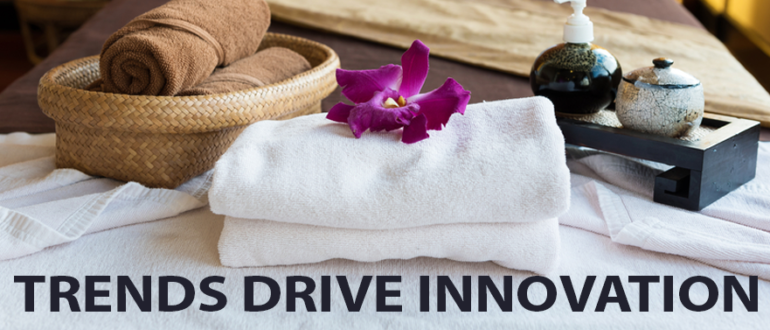
Resort and hotel spas make up only about 20% of the global spa market but are often a source of inspiration and leadership in the spa industry while facing unique challenges. In addition to changing workplace dynamics as new generations enter the workforce, they must constantly search for ways to find and retain qualified staff. Staying current with trends in a rapidly evolving industry, as well as marketing to both hotel & resort guests and the local market, represent ongoing challenges.
It may seem that hotel and resort spas have it made. After all, each day new guests check-in to the hotel ready to avail themselves of all of the resort amenities. The reality is that, like any spa, they need to attract customers – and not just their in-house guests. Resort and hotel spas need to proactively and effectively market services and facilities beyond their front door. For La Serena Spa at The Reefs in Bermuda, pulling spa guests from the local market helps avoid seasonal slowdowns.
“It’s a challenge to find a balance of local guests to keep business through all seasons,” commented Helen Bryan, Spa Manager at The Reefs. “I am fortunate that the majority of our business is from local guests.”
Some hotel and resort spas, like Kohler’s Water Spa, strive to make the spa a destination – not just an amenity of the resort. “The spa can be the reason people come to the resort, not the other way around,” commented Garrett Mersberger, Director of Kohler Waters Spa.
Hotel and resort spas such as the Willow Stream Spa at Fairmont Pacific Rim have the ability to leverage the exclusivity and unique offering of their location, contributing to their recognition as a destination for spa guests.
For many resort and hotel spas, finding and retaining qualified staff can be a challenge. Resort areas are often located far from population centers and the high-cost of living nearby may create additional hurdles. Retaining qualified and experienced staff can also be a challenge. Additionally, many spas experience high spa staff turnover. “Millennials want to grow faster,” commented Virginia Lara, Director of The Spa at Mandarin Oriental Boston.
By far, the largest challenge faced by hotel and resort spas is to stay ahead of market trends.
“Business conditions change continually,” noted Alessandra Newsom, Spa Director at the Lago Mar Beach Resort & Club. Spas need to be able to offer innovative treatments and services while being nimble enough to respond to threats such as discounting and deal sites.
“Given the high demand of the guest’s preference, with vastly increased stress, an aging population and people’s new quest for total wellbeing, there needs to be constant innovation and creative wellness offering to be ahead of competitors but still focus on authenticity of the place,” commented Lenka Rogerova, Director of Communications for Mandarin Oriental Prague. “As there is a shift in the new era of wellness, there needs to be a shift in thinking and be a step forward.”
The spa industry is highly competitive and hotel and resort spas face unique challenges as they endeavor to help guests relax and enjoy the spa experience. They must innovate to stand apart and attract both hotel and local guests. A thriving resort spa also requires staffing and creative approaches to finding and retaining key personnel. Above all, hotel and resort spas need to stay on trend and adapt to changing consumer tastes and business environments.
SpaSoft provides a dynamic spa and activities management solution used in more than 70% of the world’s Forbes Five Star Spas. See SpaSoft at ISPA Booth 328 and contact us to see how SpaSoft can help your spa stay nimble and innovative in the market.
